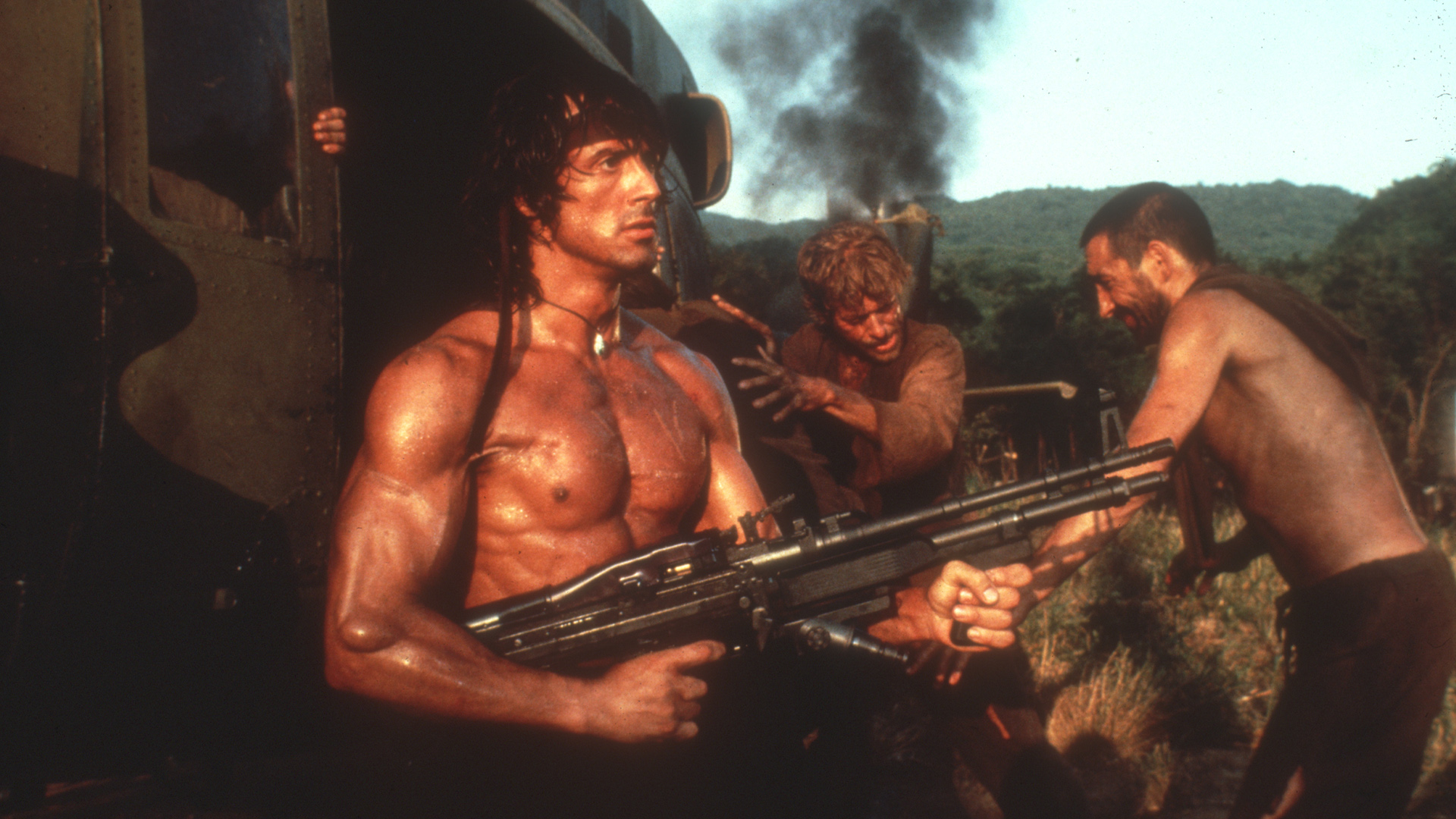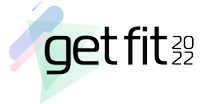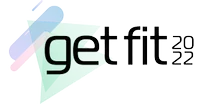


Like his biggest frenemy, Arnold Schwarzenegger, Sylvester Stallone inspired millions to transform their bodies for the better by going through constant body transformations for his roles as Rocky and Rambo. And while Arnie has always been huge, Sly is more famous for being able to grow for any subsequent leading action movie role. How did he do it?
To reach Peak Arm in the second instalment of the famous action franchise, Sly recruited two-time Mr Olympia winner Franco Columbu who recommended an exercise technique I often use in my own workouts today, nearly 40 years after the movie was released.
What was Stallone's secret to adding 10 pounds of lean muscle in eight weeks for Rambo 2? According to other cast members working on the movie with him, Sly trained for up to four hours a day while shooting the film, which is admittedly a lot of effort. The results speak for themselves, though!
But that's not all: Franco Columbu, former bodybuilder, licenced chiropractor and Sly's personal trainer for the movie, said Stallone used a workout method called supersets to build muscle (a.k.a. big arms) and help him lose weight faster. Franco was an established bodybuilder himself in the 70s, alongside Arnie, and knew full well how to get ready for big competitions quickly.
Watch the master talk about Sly's arm workout for Rambo 2 in this video:
Sylvester Stallone Rambo 2 workout: What's a superset?
Supersets are two exercises performed without rest. You perform the first exercise for the required repetitions, then move on to the second exercise straight away.
For example, you can do eight reps of strict overhead presses followed by 12 reps of triceps overhead extensions. This combination would give your triceps a run for their money.
Get all the latest news, reviews, deals and buying guides on gorgeous tech, home and active products from the T3 experts
There are a million different combinations of how to perform supersets; it's only your imagination that limits the possibilities. In general, you can use supersets to:
- Complement a big compound exercise, such as the bench press, with an isolation exercise to overload the muscles
- Train the push and pull muscles of a certain body part (e.g. arms or legs). Read more about what a push/pull split is here: best push-pull-legs workout
- Combine two exercises to burn more calories (e.g. pull-ups with squats)
Supersets put more pressure on your nervous system as they push your endurance more than standard sets; be careful not to implement them too frequently. Even someone as used to exercise as Sly used supersets for a specific time frame to achieve a particular goal (build muscle and lose weight).
Speaking of losing weight: since each superset lasts for longer, your heart rate will be higher, and you'll burn more calories. Again, air on the side of caution and use supersets cautiously for the best results.

Sylvester Stallone Rambo 2 workout: Building arms as big as Rambo
According to Columbu, Sly used push-pull style supersets to sculpt his guns for the Rambo 2. If you want similarly-sized arms, try doing the supersets as described below.
Superset #1: Two-handed triceps dumbbell extension/Dumbbell bicep curls (incline bench)
Set the adjustable weight bench so it's at a 45-degree angle. Grab one dumbbell, then lean against the back pad of the bench. You should be standing and merely leaning against the bench, not sitting on it. Hold one end of the dumbbell with two hands and lift it over your head, elbows extended.
From here, lower the dumbbell slowly by bending the elbows but not moving the upper arms. Once your elbows are at a 90-degree angle, stop and extend your arms, focusing on your triceps in the process. Repeat the movement for 8-12 reps.
Without a break, grab another dumbbell and lean back against the bench once again, arms extended, hanging, dumbbells held with an underhand grip. Lift the dumbbells slowly in front of you by bending the elbows but without moving the upper arms.
Once your elbows hit a 90-degree, stop and lower the dumbbells back down to the starting position. Repeat the movement for 8-12 reps.
After this, rest for 60-90 seconds (or as long as it takes to recover).
Superset #2: Hammer tricep extension/Sitting dumbbell curls (flat bench)
Drop the backrest of the weight bench down, so it's parallel with the ground. Grab two dumbbells (one with each hand) and sit on the bench, then slowly lean back until your back and head are flat against the bench. Lift your arms, so they are pointing upwards, perpendicular to the bench.
You should be holding the dumbbells using the hammer grip, which means they are parallel to each other.
From here, lower the dumbbells towards your head by bending the elbows but not moving the upper arm. Feel free to drop the weights as low as your arms let you monetise on the full range of motion of the exercise. Then, slowly extend the arms and return to the starting position. Repeat for 8-12 reps.
At the end of the set and without a break, sit up on the bench and lower the arms. They should be perpendicular to the ground. (You should be holding the dumbbells still). Perform 8-12 reps of sitting dumbbell bicep curls, making sure your arms move slowly, and you don't swing the weights.
Allow for a 60-90-second break after you've finished with the bicep curls.
Superset #3: Standing overhead triceps extension/Standing dumbbell curls
You're done with the bench for now. Stand up and extend your arms upwards, holding the dumbbells with a hammer grip (dumbbells parallel to each other).
To perform a standing overhead triceps extension, you have to do the same thing you did in the previous superset, only upright. Lower the arms by the elbow without moving the upper arms until the dumbbells are behind your head, then slowly extend your arms again. Repeat for 8-12 reps.
Once done, Lower your arms, so they are pointing downwards; you'll be doing curls now! Standing bicep curls are best performed in an alternating fashion, moving one dumbbell at a time. The slower you can perform the movement, the faster your muscles will grow (slow movement=more muscle under tension time). Do 8-12 reps, of this exercise.
Bonus exercise: Forearm curls/Forearm ins and outs
Franco is an old school bodybuilder, so naturally, he'd draw your attention to body parts only bodybuilders care about, such as the calves and forearms. Your forearms will work hard throughout the Stallone arm workout as you'll have to hold those dumbbells tightly, but in case you want to bomb your forearms more, Columbu recommends the two exercises below.
To perform a forearm curl, either kneel next to the bench or follow Franco's advice and half squat if you haven't one. Hold the weight – dumbbell or barbell – with the underhand grip with your palms facing up. Drop your wrist down and open your grip slightly, so the weight rolls down a bit.
You should be holding the weight with your fingers at the halfway point. From here, tighten your grip and, finally, twist your wrist up as much as you can. That's one rep.
The Forearm ins and outs train the same area, but you'll have to do them while standing. You should use dumbbells for this exercise. While standing, have your arms hanging by your side, holding the dumbbells with the hammer grip. From here, you want to extend the wrist out as much as you can, then flex, so you bring them back in. Don't extend/flex your wrist too much, and always perform the exercise slowly for maximum results.
This feature is part of T3's Get Fit 2022 campaign. We’ll be bringing you a wealth of guides, features, deals and news to help you get healthy, fit and ready for anything the new year can throw at you. Whether you’re a newcomer to fitness or someone with a passion for it, we’ll bring you all the best workouts, diet advice and gear to set you on the right track.

Matt Kollat is a journalist and content creator who works for T3.com and its magazine counterpart as an Active Editor. His areas of expertise include wearables, drones, fitness equipment, nutrition and outdoor gear. He joined T3 in 2019. His byline appears in several publications, including Techradar and Fit&Well, and more. Matt also collaborated with other content creators (e.g. Garage Gym Reviews) and judged many awards, such as the European Specialist Sports Nutrition Alliance's ESSNawards. When he isn't working out, running or cycling, you'll find him roaming the countryside and trying out new podcasting and content creation equipment.
